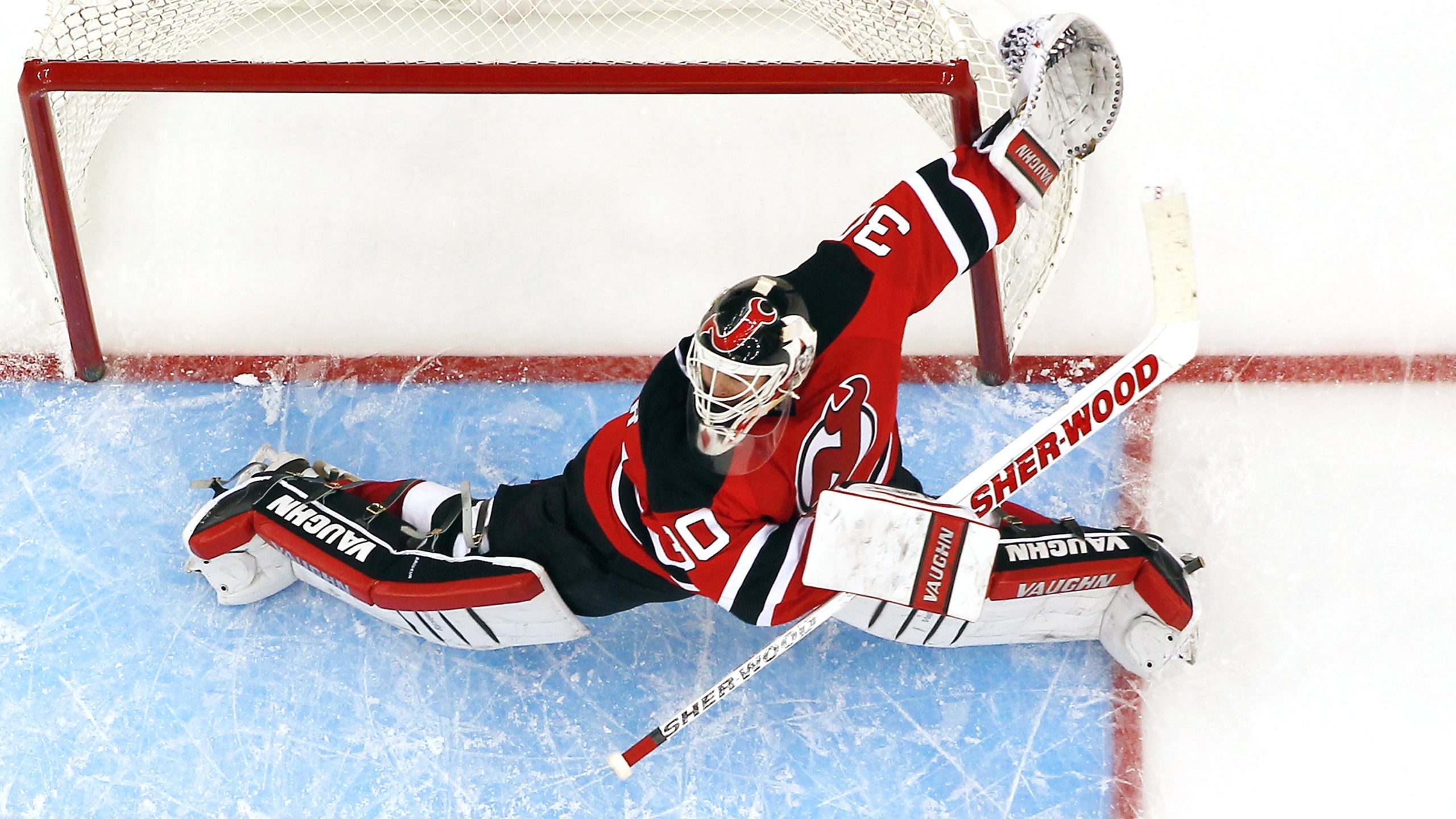Tuukka Rask is quickly becoming accepted as the best goaltender in the NHL, with the driving force behind that view being save percentage. Since entering the NHL, Rask has outperformed the league average by .015 save-percentage points. To put that in perspective, the average this season is .914, so he has been a .929 for his career based on the current standard. Earlier in my research I pointed out some of the reasons for this sustained success, including possible advantages based on an easier workload.
Right now, the idea that a coaching system can inflate save percentage is a point of contention. One of the issues is that some of those who champion the cause regularly misidentify coaches who don’t truly have a history of affecting goalie stats. Mike Smith has a great year out of nowhere for Phoenix and the credit goes to Dave Tippet. Smith crashes the next two seasons and it devalues the legitimacy of a coaching-systems argument. The problem is Tippet hasn’t really influenced his team defence during his coaching career. His goaltenders have been .003 better than the league average, which pales in comparison to coaches like Pat Burns, Jacques Lemaire and Claude Julien who are in the plus-.010 range.
There is enough statistical noise out there because of poor current data collection (i.e. NHL shot locations) as well as the total absence of factors like puck velocity and pre-shot movement from the available data. Without that information we are stuck with the highly flawed save percentage to make assessments. What if a coach can manipulate this data with his system? Every time I point out Julien’s success, the consistent answer is his data is good because he has been blessed with great goaltending. The same can be said for Burns. He had Patrick Roy, who would make anyone look good. The problem with that is the greatest statistical success Roy ever had was under Burns—three Vezina Trophies in four pre-prime seasons.
In an attempt to separate Burns’ influence from the noise, I calculated Roy’s career save percentage against the league average. Roy was .015 better than your average NHL goaltender during his career. I then took his yearly ranking against the league average and subtracted his personal average from the total. In the chart below the baseline for comparables is Roy’s .015 above league average. This allows us to see the seasons where he exceeded his own career average.
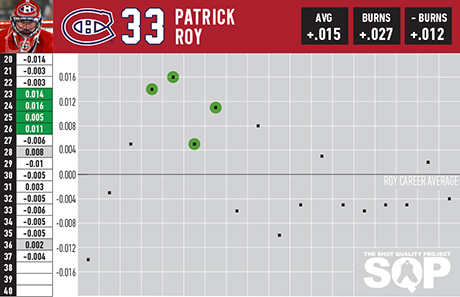
(only seasons of 10-plus games included)
Roy’s four years playing for Burns came during his age-23 to 26 seasons—widely considered the lead-up to a goaltender’s prime. During that stretch he was better statistically than every other year of his career save one. With Burns he was plus-.027 better than the average NHL goaltender. Without him it dropped to .012. Under Burns, Roy was the equivalent to a current-day .941 goaltender on average—for four years.
Burns left the Habs and ended up in Toronto, where similar results followed.
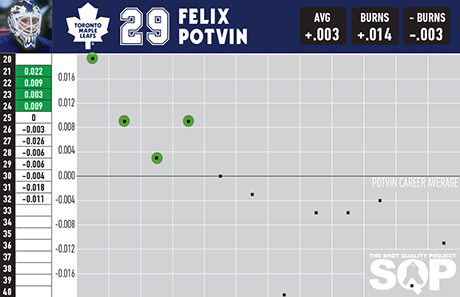
(only seasons of 10-plus games included)
As Roy declined during the 1992-93 regular season, Felix Potvin entered the conversation as the greatest goaltender in the game. During his first NHL season he was .022 better than the league average. His career was slightly above average on the whole, but almost all of that was achieved while he played for Burns. After he entered his accepted goaltending prime at 26 years old, he never cracked the league average again.
Burns most impressive work awaited him in Boston where he tricked the world into naming Byron Dafoe a Vezina Trophy-finalist and a Second Team All-Star. Yes. That happened.
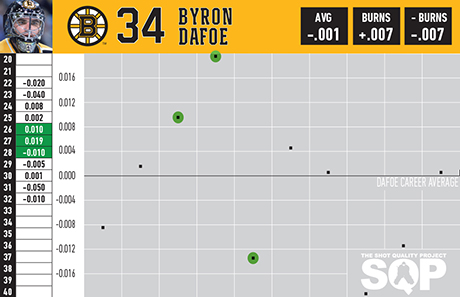
(only seasons of 10-plus games included)
Statistically, Dafoe registers as an average NHL starter, but remove the Burns years and you are looking at a Ondrej Pavelec/Steve Mason career arcs. It took 10 full seasons before one of Burns’s starters registered a sub-average save percentage.
Burns’s next stop was New Jersey and a two-year relationship with Martin Brodeur.
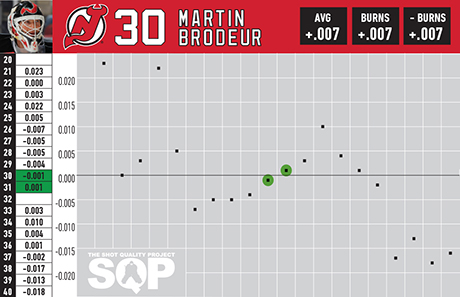
(only seasons of 10-plus games included)
This is the first time Burns’s impact appears statistically irrelevant. The results were negligible as Brodeur lined-up perfectly with his own career. His baseline has been .007 greater than the league average, exactly the same result that Burns managed to get from him.
What if that baseline was artificially high to begin with because of other coaching influences? If we look at Lemaire and Julien, we see a similar effect to Burns with their starting goaltenders.
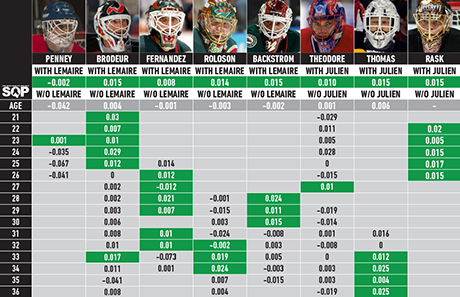
(only seasons of 10-plus games included)
The best seasons registered by the goaltenders assembled above all came under Lemaire or Julien, except for Jose Theodore’s. He won the Hart and Vezina Trophies in 2002 under Michel Therien, but his last great season (a .919 save percentage) came under Julien a decade ago.
If I re-plot Brodeur’s results, but highlight his seasons under Lemaire, Julien and Burns, you can see why I am skeptical of Brodeur’s career. During his prime under Robbie Ftorek, Kevin Constantine and Larry Robinson, Brodeur was barely above league average.
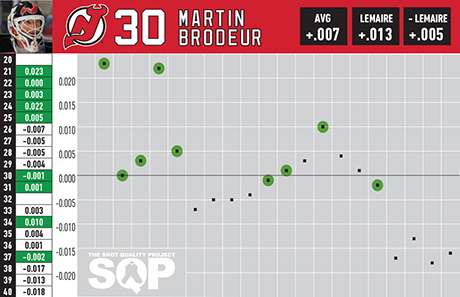
(only seasons of 10-plus games included)
We can even see the effect Lemaire had during a singe-season sample. During the 2010-11 campaign, coach John MacLean was fired mid-season. At that point Brodeur had an .887 save percentage, .026 below the league average. Lemaire took over and Brodeur registered .916 for the remainder of the season, .003 greater than average. Some of that was likely just his numbers normalizing, but Brodeur hasn’t been higher than .908 since Lemaire retired for good.
I’m not suggesting Brodeur is not worthy of Hall of Fame enshrinement, but I am suggesting that he found himself in the best environment possible to succeed—one that can easily enhance a reputation when it is so easily tied to save percentage.
An inflated save percentage doesn’t mean that a goaltender isn’t good or even great. It simply inflates our perception of an individual’s talent. I don’t believe that Rask’s true talent level (plus-.015 over the average NHL goalie for his career) is equivalent to Roy’s (also plus-.015), but after this research I don’t know that Roy’s true talent level is the equivalent to our perception of Roy’s talent level. Rask is among the upper echelon of NHL goaltenders, but I am not ready to anoint him as the best in the world.

